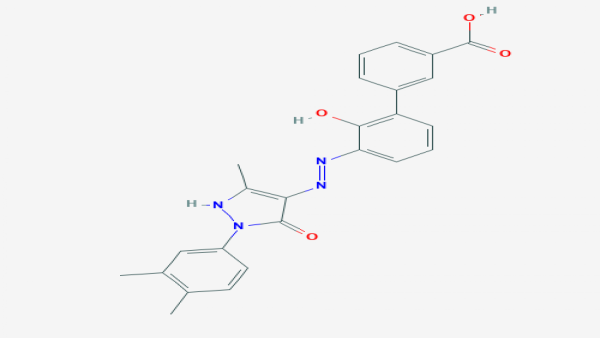Eltrombopag
General information
Eltrombopag is used to treat low blood platelet counts in adults with chronic immune (idiopathic) thrombocytopenia (ITP), when certain other medicines, or surgery to remove the spleen, have not worked well enough. ITP is a condition that may cause unusual bruising or bleeding due to an abnormally low number of platelets in the blood. Eltrombopag has also been recently approved (late 2012) for the treatment of thrombocytopenia (low blood platelet counts) in patients with chronic hepatitis C to allow them to initiate and maintain interferon-based therapy (DrugBank).

Supporting references
| Link | Tested on | Impact factor | Notes | Publication date |
|---|---|---|---|---|
|
In silico identification of widely used and well-tolerated drugs as potential SARS-CoV-2 3C-like protease and viral RNA-dependent RNA polymerase inhibitors for direct use in clinical trials
|
in silico | 3.31 | In silico screening of potential SARS-CoV-2 RNA-dependent RNA polymerase inhibitors. |
Aug/05/2020 |
|
Comparative analysis of antiviral efficacy of FDA-approved drugs against SARS-CoV-2 in human lung cells: Nafamostat is the most potent antiviral drug candidate
Preprint |
Calu-3 human airway epithelial cells | comparable IC50 value between Calu-3 and VERO E6 cells |
May/12/2020 |
AI-suggested references
Clinical trials
| ID | Title | Status | Phase | Start date | Completion date |
|---|---|---|---|---|---|
| NCT04516837 | Eltrombopag Plus rhTPO Versus Eltrombopag for ITP During the COVID-19 Pandemic (ELABORATE-19) | Recruiting | Phase 2 | Aug/31/2020 | Aug/01/2022 |
|
|||||
